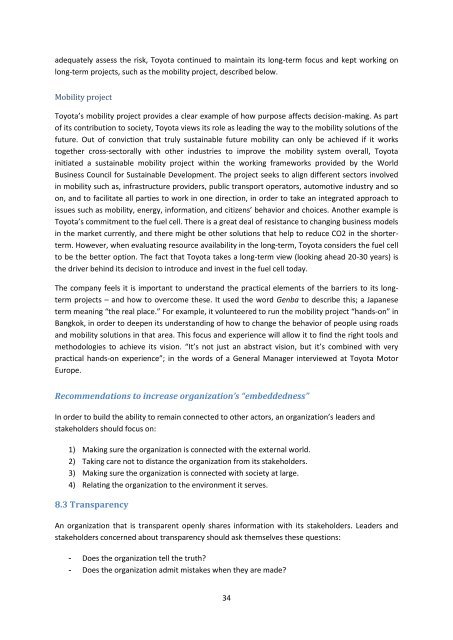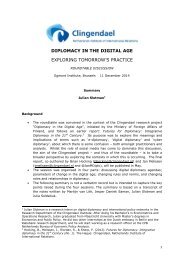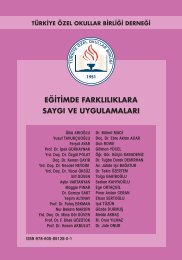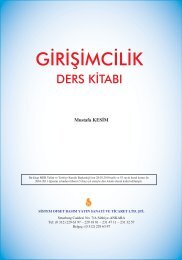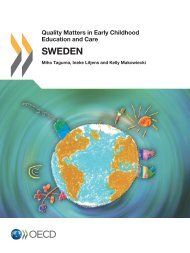BM_IMD_REPORT-How-Authentic-is-your-Corporate-Purpose
BM_IMD_REPORT-How-Authentic-is-your-Corporate-Purpose
BM_IMD_REPORT-How-Authentic-is-your-Corporate-Purpose
You also want an ePaper? Increase the reach of your titles
YUMPU automatically turns print PDFs into web optimized ePapers that Google loves.
adequately assess the r<strong>is</strong>k, Toyota continued to maintain its long-term focus and kept working on<br />
long-term projects, such as the mobility project, described below.<br />
Mobility project<br />
Toyota’s mobility project provides a clear example of how purpose affects dec<strong>is</strong>ion-making. As part<br />
of its contribution to society, Toyota views its role as leading the way to the mobility solutions of the<br />
future. Out of conviction that truly sustainable future mobility can only be achieved if it works<br />
together cross-sectorally with other industries to improve the mobility system overall, Toyota<br />
initiated a sustainable mobility project within the working frameworks provided by the World<br />
Business Council for Sustainable Development. The project seeks to align different sectors involved<br />
in mobility such as, infrastructure providers, public transport operators, automotive industry and so<br />
on, and to facilitate all parties to work in one direction, in order to take an integrated approach to<br />
<strong>is</strong>sues such as mobility, energy, information, and citizens’ behavior and choices. Another example <strong>is</strong><br />
Toyota’s commitment to the fuel cell. There <strong>is</strong> a great deal of res<strong>is</strong>tance to changing business models<br />
in the market currently, and there might be other solutions that help to reduce CO2 in the shorterterm.<br />
<strong>How</strong>ever, when evaluating resource availability in the long-term, Toyota considers the fuel cell<br />
to be the better option. The fact that Toyota takes a long-term view (looking ahead 20-30 years) <strong>is</strong><br />
the driver behind its dec<strong>is</strong>ion to introduce and invest in the fuel cell today.<br />
The company feels it <strong>is</strong> important to understand the practical elements of the barriers to its longterm<br />
projects – and how to overcome these. It used the word Genba to describe th<strong>is</strong>; a Japanese<br />
term meaning “the real place.” For example, it volunteered to run the mobility project “hands-on” in<br />
Bangkok, in order to deepen its understanding of how to change the behavior of people using roads<br />
and mobility solutions in that area. Th<strong>is</strong> focus and experience will allow it to find the right tools and<br />
methodologies to achieve its v<strong>is</strong>ion. “It’s not just an abstract v<strong>is</strong>ion, but it’s combined with very<br />
practical hands-on experience”; in the words of a General Manager interviewed at Toyota Motor<br />
Europe.<br />
Recommendations to increase organization’s “embeddedness”<br />
In order to build the ability to remain connected to other actors, an organization’s leaders and<br />
stakeholders should focus on:<br />
1) Making sure the organization <strong>is</strong> connected with the external world.<br />
2) Taking care not to d<strong>is</strong>tance the organization from its stakeholders.<br />
3) Making sure the organization <strong>is</strong> connected with society at large.<br />
4) Relating the organization to the environment it serves.<br />
8.3 Transparency<br />
An organization that <strong>is</strong> transparent openly shares information with its stakeholders. Leaders and<br />
stakeholders concerned about transparency should ask themselves these questions:<br />
- Does the organization tell the truth?<br />
- Does the organization admit m<strong>is</strong>takes when they are made?<br />
34


